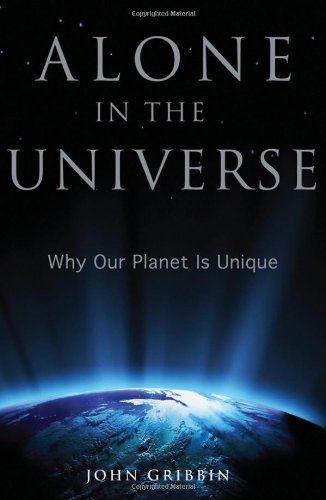John Gribbin - Alone in the Universe Book/Magazine
John Wiley & Sons, Inc. - Alone in the Universe: Why Our Planet Is Unique {Book} [2011]
Contributed by Robert A. Morstadt
| Published: | 2013-02-11 |
| Author: | John Gribbin |
| Manufacturer: | John Wiley & Sons, Inc. |
 Brief
Brief
After hearing many opinions stating that there are many intelligent civilizations in the Milky Way Galaxy I thought it would be fun to hear the opposing viewpoint. I was not disappointed. With the number of newly discovered exo-planets increasing everyday these speculations and view points will become more apparent in the public awareness in the years ahead. I have seen a calculation using the Drake equation showing that there are 10,000 intelligent civilizations in our galaxy alone. Mr. Gribbin feels that some of the factors in this equation have been set way too high. In fact his interpretation is that the number of planets in the Milky Way Galaxy is much lower. The number is one and we are that planet. The idea that we are alone is not new. Enrico Fermi stated the premise many decades ago. If there are so many planets with intelligent civilizations, then where are they?
The book is relatively short at about 205 pages and easy to read. I found many familiar concepts that I have read about in recent years in my favorite magazines Astronomy and Scientific American have been reviewed and used in the book. For example, in general stars with elements heavier than helium (usually referred to as metallic elements in this context) that are important for building life are found only in the inner part of the Milky Way Galaxy at about 20,000 light years from the center. The rest of the galaxy tends to be deficient in these higher elements. The author goes on to say that there may be many planets that are the right distance from their sun to be in the habitable zone for life, but they need to be in that zone for a very long time and that zone in general moves with time. Then, too, there may be planets that have life, but they may not have intelligent life.
Other factors that make our planet unique are its iron core and the resulting beneficial magnetic field along with our relatively large moon that helps lock in a beneficial stable long-lived rotation. Oddly enough, the events that helped formed these features may be related. Our solar system was created about 4 billion years ago, but life exploded only about 500 million years ago during the Cambrian era. Prior to that explosion of life on earth only consisted of single cell creatures, the prokaryotes and the eukaryotes, and the prokaryotes didn’t even have a nucleus. The oceans had these single-celled life forms for several billion years during the Pre-Cambrian era and suddenly the sophistication of life took off. Why? And if more sophisticated life did not arrive, then intelligent life on earth would not have happened.
During the course of creating our planet the impact of small asteroids and comets may have helped deliver water to our biosphere. The timely arrival of these impacts may have also triggered new branches of evolution. However, on an evolutionary time-scale how can one say that all impacts are beneficial? Maybe these impacts may be beneficial or fortuitous for evolution. On the other hand, such collisions might be the end of all life on a planet.
This is an interesting book with some interesting closing remarks. We may be alone in the universe and we should appreciate what we have.
Sponsored Ads
 |
 |











